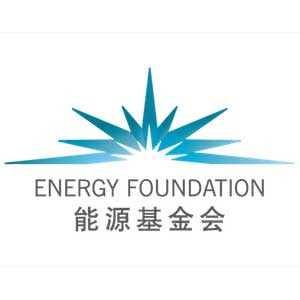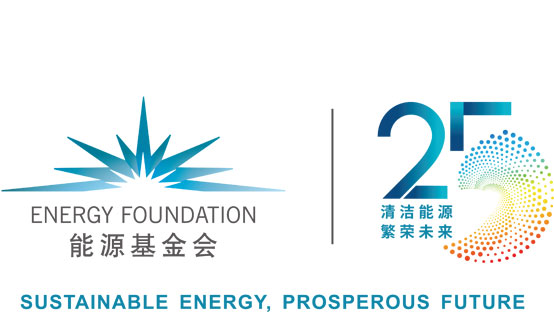The Low-carbon Transformation of the Chinese Economy (Part 2)
Since early 2018, the health of the Chinese economy has alarmed many around the world, giving rise to concerns that the most powerful engine of global growth is sputtering. But the deceleration has been deliberate on the part of the Chinese government and steadily taking place over the last several years.
From the perspective of economics of growth, China’s rapid development in the past relied mainly on resources such as labor, capital, energy, land, water, minerals, and environmental capacity.
However, after decades of uninterrupted expansion in energy consumption, environmental pollution, and water issues, the country has reached a bottleneck, restricting further development of its national economy. In addition, investment yield has continued to decline, with the supply of cheap labor no longer cheap and approaching the Lewis turning point. China is also fast depleting its natural resources and environmental capacity. And the structural problems that appeared amid economic and social developments are increasingly prominent.
The country has incurred heavy economic and social costs due to massive amount of excess capacity and stranded assets. At the macroeconomic level, systematic risks in the areas of debt, finance, and the environment are on the increase. For the growing Chinese middle class, their aspiration for clean environment and quality life that is healthy and comfortable is seriously at odds with heavy pollution and other forms of environmental degradation in the country.
Over the last months, China has faced serious uncertainties in international trade and weak domestic demand. In the past, the country could rely on its pillar industries such as the real estate sector and the heavy chemical industry, but their developments are now being constrained by a whole host of factors. New growth areas are still in the making, not yet able to take over. And it remains to be seen whether they will eventually form effective demand and provide sufficient employment opportunities.
China’s development is also increasingly under the constraint of stringent rules on greenhouse gas emissions. This is both a challenge and an opportunity. It fits well with the requirements of China’s economic transition: change of development model and industrial upgrade. All these require technological progress and structural adjustment to improve efficiency of factors of production. What’s also needed is transformation in energy, industrial, and land use structures and in transportation mode, on top of the growth orientating toward higher efficiency, to adapt to the changes in the structure of the factors of production and their degrees of scarcity. The goal is to be free of the existing comparative disadvantages of the factors and establish new comparative advantages. Since both carbon emissions and criteria pollutants often come from the same root causes, such as large-scale uses of fossil energy, responding properly to emission constraints will become a booster and catalyst for China’s economic upgrading.
Therefore, in the context of comprehensively deepening reforms and building an ecological civilization, China needs to formulate an overarching strategy for low-carbon development, enhance its strategic positioning, and establish a close link between the strategy, its comprehensive reform and socio-economic development strategies. This will allow low-carbon development to become an important driving force for improving efficiency of factors of production and lead to economic growth and transformation. As a result, the country will achieve energy efficiency improvement, energy structure transformation, industrial structure upgrading, income structure optimization, and human capital improvement. Last but not least, the country could pioneer a new economic path for developing economies around the world.
In the authors’ opinion, in order to achieve a transformation with low-carbon development, China needs to optimize its path forward in three aspects: time, space, and structure.
The time aspect basically means that as China promises to meet its peaking target on carbon emissions by 2030, it will need to start relevant control processes as soon as possible. In order to do this, a framework that will produce enough pressures needs to be formed, covering the areas of emission growth rate, peak range, and emission reduction pathways during the post-peak period. So it will bring about active efforts to make carbon emissions peak earlier and lower than would otherwise be the case and achieve innovation in path of development. Also, it’s necessary to establish a close link between the whole process and the goals of energy conservation and carbon reductions for the short term, the medium term, and the long term, and set targets on socio-economic development and carbon reductions for each and every stage.
The short term strategic focus is to improve energy efficiency in the manufacturing industry and continuously optimize industrial structure as income level increases; reduce or end the use of the following types of coal in this order: disaggregated coal, coal for industrial operation, and coal for inefficient power generation unit. Another priority is rapid electrification of vehicles, so as to reduce consumption of fossil fuel and promote decarbonization within the energy structure. The country also needs to be far-sighted in meeting its goals from low-carbon planning in the fields of urbanization, infrastructure, transportation, construction, etc., in order to avoid a lock-in effect.
In the medium term, the country will need to gradually complete the low-carbon transformation of its transportation and construction sectors, build an industrial sector with a prominent position for the low-carbon industry, enhance its R&D capability in related technologies, and build low-carbon urban areas, industrial parks, and communities.
In the long run, China should pursue a complete decoupling of economic development from carbon emissions, getting rid of its dependence on fossil fuel, achieving energy security through renewables, comprehensively improving its low-carbon competitiveness of the national economy, and promoting low-carbon lifestyles and consumption patterns. All of these are necessary for the country to build a truly low-carbon society.
The spatial aspect first refers to strategic planning on matters such as functional zoning of the country, national planning of land use, and innovative urban planning. They are to be combined with optimization of spatial layout at the levels of urban agglomerations, cities, urban areas, small towns, and residential blocks, so as to create low-carbon urban entities, and promote shift of regional and urban spatial structure toward to a multi-center, multi-level, group-like form. The aim here is to reduce carbon emissions caused by inappropriate set up of urban function and layout, and unreasonable infrastructure design.
At the urban agglomeration level, the task is to optimize the general layout of the region, in order to develop a multi-level and orderly system of city clusters; coordinate regional development by optimizing regional inputs of factors of production, resource allocation, and mix of industries; and construct a low-carbon transportation network within it.
At the city level, there is a need to build a compact spatial structure to prevent urban sprawl; encourage mixed land use and diversified development while promoting a healthy balance of businesses and homes; and push for decarbonization of urban infrastructure systems.
At the level of urban areas and small towns, we advocate “transit oriented development,” a real-estate development model based on public transportation; improved connectivity with optimization of urban mechanisms; and sensible infrastructures for bicycle and pedestrian with a system of neighborhood slow zones.
At the residential block level, we need to promote low-carbon and efficient models of community space development and infrastructure; fosters low-carbon culture and lifestyles; and find a low-carbon model of operation and management.
When taking about the structural aspect, the central point is an embrace of carbon productivity improvement as the core goal of development. Its main theme is about transforming the model of development with adjustment for economic structures. The country should seek to continuously optimize structures of economic sectors, industries, and their products as people’s income increases. Eventually, this course of action will lead to effective control of carbon emissions and increasing competitiveness in the areas of economy and technology.
With regard to economic sectors, it is necessary to promote structural optimization between the primary sector, the secondary sector, and the tertiary sector by increasing the weight of modern service industries and production-oriented services through institutional reform and policy guidance. In terms of industries, integration of industry organizations should be used as a tool to promote internal adjustment of structures of industries and products, with emphasis for high value-added industries such as high-end manufacturing, high-tech industries, and other emerging industries of strategic importance. With regard to products, complete industry value chains should be established, organically integrating brand name, R&D, core technology, high-end manufacturing, and product-oriented services, so as to increase the volume of high value-added products.
All of these above cannot be carried out without proper integration of industrial organizations and reforms of its systems of enterprise ownership, investment and financing, and intellectual property. So again, reform is the key word.




